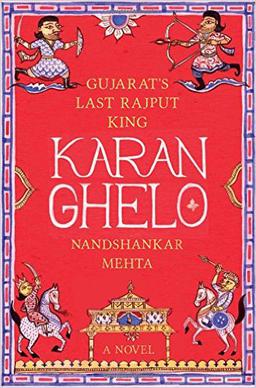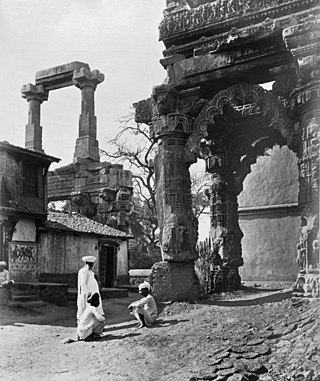Related Research Articles

Jauhar, sometimes spelled Jowhar or Juhar, was a Hindu Rajput practice of mass self-immolation by females, both adults and children, in the Indian subcontinent to avoid capture, enslavement, and rape by invaders when facing certain defeat during a war. Some reports of jauhar mention women committing self-immolation along with their children. This practice was historically observed in the northwest regions of India, with most famous jauhars in recorded history occurring during wars between Hindu Rajput kingdoms in Rajasthan and the opposing Muslim armies. Jauhar was only performed during war, usually when there was no chance of victory. The term jauhar often connotes jauhar-immolation. Jauhar involved Hindu Rajput women committing suicide with their children and valuables in a massive fire, in order to avoid capture and abuse in the face of inescapable military defeat. At the same time or shortly thereafter, the men would ritualistically march to the battlefield expecting certain death, which in the regional tradition is called saka. This practice was intended to show that those committing it valued their honor more highly than their lives.

Hemachandra was a 12th century Indian Jain saint, scholar, poet, mathematician, philosopher, yogi, grammarian, law theorist, historian, lexicographer, rhetorician, logician, and prosodist. Noted as a prodigy by his contemporaries, he gained the title kalikālasarvajña, "the knower of all knowledge in his times" and father of the Gujarati language.

Patan is the administrative seat of Patan district in the Indian state of Gujarat and is an administered municipality. It was the capital of Gujarat's Chavda and Chaulukya dynasties in medieval times, and is also known as Anhilpur-Patan to distinguish it from Prabhas Patan. During the rule of Gujarat Sultanate, it was the capital from 1407 to 1411.
In Indian culture, the Agnivanshi are people who claim descent from Agni, the Vedic god of fire. The Agnivanshi lineage is one of the lineages among the Rajput clans, the others being the Suryavanshi

Bhavai, also known as Vesha or Swang, is a popular folk theatre form of western India, especially in Gujarat.

Mehsana district is one of the 33 districts of Gujarat state in western India. Mehsana city is the administrative headquarters of this district. The district has a population of over 1.8 million and an area of over 4,500 km2. There are over 600 villages in this district with a population of 2,035,064 of which 22.40% were urban as of 2011.

Vachharadada or Vachhrajdada is a Hindu deity from Gujarat in India. He is an eminent warrior-hero of the region. Hindus honor him as a deity.
Shanta Kalidas Gandhi was an Indian theatre director, dancer and playwright who was closely associated with IPTA, the cultural wing of the Communist Party of India. She studied with Indira Gandhi at a residential school in the early 1930s, and remained close to the prime minister in later life. She received many government awards and sinecures under the Indira Gandhi administration, including the Padma Shri (1984) and being made chairperson of the National School of Drama (1982–84).

Jagadeva, also known as Jagaddeva or Jagdev Parmar, was an 11th-12th century prince from the Paramara dynasty of central India. He is known from an inscription discovered at Jainad and some folk legends. His political status is uncertain, although according to one theory, he may have been a vassal of the Western Chalukyas.

Brahma Kund is a stepped temple tank in Sihor town of Bhavnagar district, Gujarat, India. It is located near the southern wall of the old town. It believed that it was constructed by Jayasimha Siddharaja.

Sahasralinga Tank or Sahasralinga Talav is a medieval artificial water tank in Patan, Gujarat, India. It was commissioned during Chaulukya (Solanki) rule, but now it is empty and in a ruined state. It is a Monument of National Importance protected by Archaeological Survey of India (N-GJ-161).

The Chaulukya dynasty, also Solanki dynasty, was a dynasty that ruled the Kingdom of Gujarat in western India, between c. 940 CE and c. 1244 CE. Their capital was located at Anahilavada. At times, their rule extended to the Malwa region in present-day Madhya Pradesh. The family is also known as the "Solanki dynasty" in the vernacular literature. They belonged to the Solanki clan of Rajputs.
Jayasiṃha, who assumed the title Siddharāja, ruled the Kingdom of Gujarat between 1092 and 1142. He was a member of the Chaulukya dynasty.

Karan Ghelo: Gujarat's Last Rajput King is a Gujarati historical novel by Nandshankar Mehta. It was published in 1866 and was the first original novel in Gujarati. The book was translated in English in 2015.
The Chudasama dynasty, a Samma branch, ruled parts of the present-day Saurashtra region of Gujarat state in India between the 9th and 15th centuries. The origin of the Chudasama to Chudachandra Yadav, a Rajput of the Sama tribe. The ruling dynasty was, therefore called Chudasama. Their capital was based in Junagadh and Vamanasthali.

The Rudra Mahalaya Temple, also known as Rudramal, is a destroyed/desecrated Hindu temple complex at Siddhpur in the Patan district of Gujarat, India. Its construction was started in 943 CE by Mularaja and completed in 1140 CE by Jayasimha Siddharaja, a ruler of the Chaulukya dynasty. The Hindu temple was destroyed by the Sultan of Delhi, Alauddin Khalji, and later the Sultan of Gujarat, Ahmed Shah I (1410–1444) desecrated and substantially demolished the temple, and also converted part of it into the congregational mosque of the city. Two torans (porches) and four pillars of the former central structure still stand along with the western part of the complex used as a congregational mosque.

Zinzuwada, also spelled Jhinjhuvada or Jhinjhuwada is a town in Dasada Taluka of Surendranagar district, Gujarat, India.

Muzaffar Shah I, born Zafar Khan, was the founder of the Muzaffarid dynasty in Medieval India, reigning over the Gujarat Sultanate from 1391 to 1403 and again from 1404 to 1411.
Ranakadevi was a legendary 12th century queen of Khengara, the Chudasama ruler of Saurashtra region of western India. She is mentioned in the bardic tragic romance representing the battle between Chudasama king Khengara and Chaulukya king Jayasimha Siddharaja. However, this legend is not credible.
Mohanlal Chunilal Dhami was a Gujarati novelist, poet, playwright, journalist and Ayurveda practitioner from Rajkot, Gujarat, India. He had published more than 170 books. His literary works are chiefly based on Jain literature.
References
- ↑ Pal, Sushilaben; Narula, S. C. (1998). "Some Ballads and Legends : Gujarati Folklore". Indian Literature. 42 (5 (187)): 172–184. ISSN 0019-5804. JSTOR 23338788.
- 1 2 Bharati Ray (2009). Different Types of History. Pearson Education India. pp. 374, 380–381. ISBN 978-81-317-1818-6.
- ↑ Bharati Ray (4 October 2005). Women of India: Colonial and Post-colonial Periods. SAGE Publications. pp. 527–. ISBN 978-0-7619-3409-7.
- ↑ Manohar Laxman Varadpande (1992). History of Indian Theatre. Abhinav Publications. pp. 174–. ISBN 978-81-7017-278-9.
- ↑ Vasudha Dalmia; Rashmi Sadana (5 April 2012). The Cambridge Companion to Modern Indian Culture. Cambridge University Press. p. 218. ISBN 978-1-139-82546-7.
- 1 2 Ashish Rajadhyaksha; Paul Willemen (10 July 2014). Encyclopedia of Indian Cinema. Taylor & Francis. pp. 11–. ISBN 978-1-135-94325-7.